ExoMars 2016 – Mars Arrival Overview
>>>Live Arrival Coverage
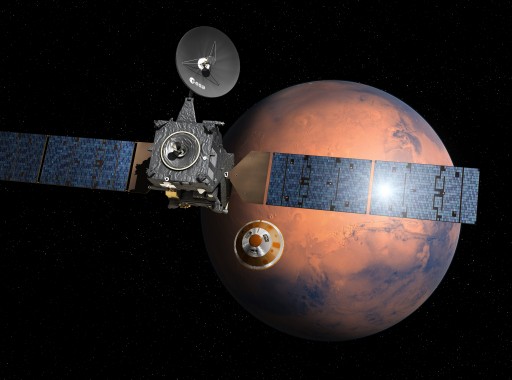
ESA’s Schiaparelli Entry, Descent & Landing Demonstration Module (EDM) sets out to become Europe’s first craft to make a successful landing on Planet Mars, joining only NASA in achieving this feat.
Schiaparelli lifted off atop a Proton-M Rocket on March 14, 2016 and was shepherded to Mars by the Trace Gas Orbiter to which it remains attached until three days prior to the October 19 landing to receive heater power and communications support.
While Schiaparelli maneuvers through an adventurous landing sequence of only six minutes, a few hundred Kilometers higher, the Trace Gas Orbiter will fire its main engine for over two hours to become the second European spacecraft to be placed into orbit around Mars.
The primary objective of EDM is – as its name days – a demonstration of a Mars Entry, Descent and Landing vehicle for the ExoMars 2020 mission that is hoped to deliver Europe’s first rover to the surface to the Red Planet
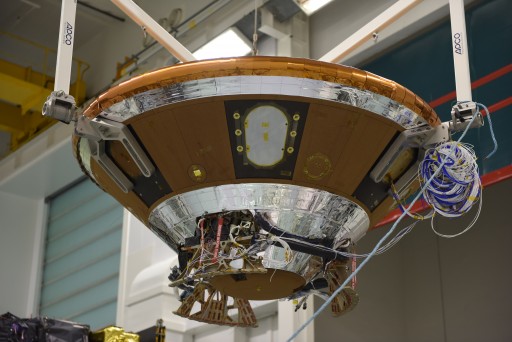
To satisfy its mission objectives, Schiaparelli has to conduct a successful entry into the Martian atmosphere, parachute-assisted descent and propulsive landing – in the process employing a sophisticated suite of sensors to gather data on the re-entry environment and the performance of the various systems.
Landing in Meridiani Planum – close to NASA’s Opportunity rover that has been on Mars since 2004 – EDM will survive only four Martian Days using every last bit of power stored in its chemical batteries to capture measurements with an environmental monitoring system, gathering data on meteorological and other parameters.
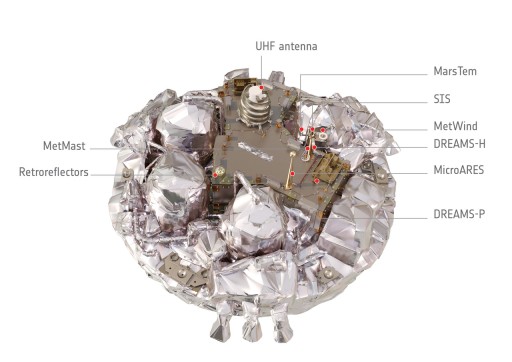
The Schiaparelli lander is based on heritage designs that have been evaluated as part of earlier ExoMars studies. The principal components of EDM are the Surface Platform, the Back Shield and the Front Shield; the surface platform itself is 1.65 meters in diameter and the total mass of the EDM is 600 Kilograms.
Throughout the seven-month cruise phase to Mars, Schiaparelli remained mostly in a passive hibernation with heater power supplied by the Trace Gas Orbiter to keep all systems at a stable temperature, especially the non-rechargeable batteries in order to preserve their full charge from liftoff to EDM separation.
Activation of the lander in the weeks ahead of landing enables the Mission Control Team to first upload the timeline for the Mars Surface Mission, specifically the science sequence to be executed by the instruments and the communications slots when NASA and ESA Mars Orbiters pass over the landing site to retrieve the data from Schiaparelli.
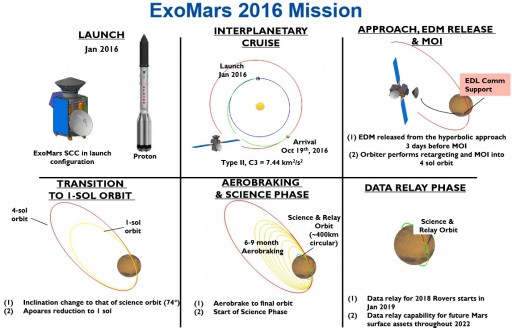
The next upload is the command sequence for the critical Entry, Descent and Landing Sequence that, for the most part, relies on timers to execute the necessary events that deliver EDM to the point where it can begin its final landing maneuver.
Ten days prior to EDM separation, the combined spacecraft begins a carefully planned maneuver known as ‘thermal boost’ – exposing the lander to the sun to be heated up in order to save heater power when on its own, prolonging battery life on the surface of Mars.
The final adjustment of the spacecraft’s trajectory towards the precise entry point in the Martian atmosphere occurs two and a half days prior to separation. A last checkout of the lander is run the day before release to ensure everything is ready for EDL (Entry, Descent & Landing).
Schiaparelli’s adventurous landing begins with the separation from the Trace Gas Orbiter, planned at 14:42 UTC on October 16 and accomplished with a three-point spin-up and separation mechanism that sends the lander on its way at a relative velocity of 0.3 meters per second and a spin rate of 2.75RPM for stabilization.
>>ExoMars 2016 Arrival Timeline
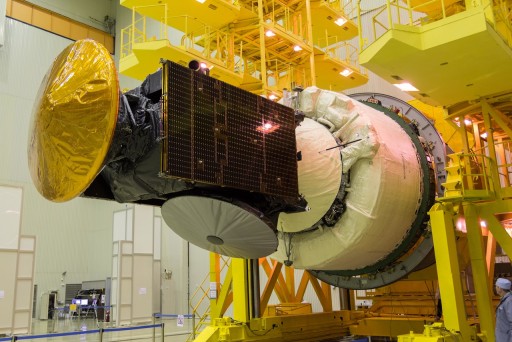
Only outfitted with its landing propulsion system, EDM relies on TGO to deliver it to the correct trajectory to the precisely calculated entry location. The entry angle is set at 1.1 degrees and has to be met with high precision given Schiaparelli would burn up in case of a steep entry or skip off the atmosphere if the angle is too shallow.
In case the separation of the lander fails for some reason, a backup opportunity is available 32 hours after the first slot to provide some time for teams to troubleshoot. The orbiter can not achieve orbit around Mars with the EDM still attached, therefore – if both attempts are unsuccessful, an emergency jettisoning of Schiaparelli would be performed. The additional mass of the 600-Kilogram EDM would not allow TGO to achieve the necessary change in velocity to enter a stable orbit around Mars.
In case Schiaparelli can not be separated after three attempts, the mission would move into a contingency scenario where TGO maneuvers to a flyby trajectory to fly past Mars at close distance and continue in a heliocentric orbit for another attempt at orbital insertion two years later which would be possible with the lander still attached to the orbiter.
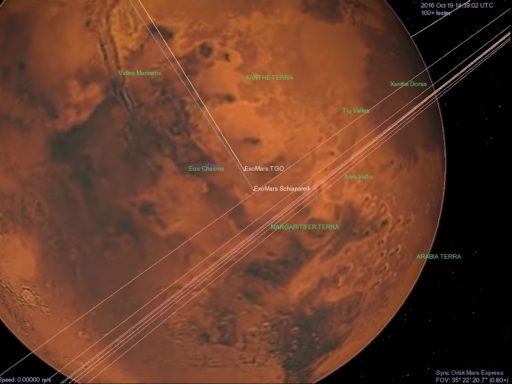
If the maneuver goes as planned and Schiaparelli departs the orbiter on time, TGO is set for a critical periapsis-raising maneuver at 2:42 UTC on October 17 – a 10m/s main engine burn that transitions the orbiter from a Mars intercept trajectory to a flyby at a safe distance of around 1,300 Kilometers, lining up for the critical Mars Orbit Insertion Maneuver.
The Schiaparelli lander wakes up from hibernation 75 minutes prior to re-entry, giving it enough time to initialize its landing software and use Sun Sensors to determine its orientation in space and from that generate an inertial reference frame for the Gyroscopes, the primary guidance data source during the early entry portion.
The critical six-minute EDL sequence begins at 14:42:18 UTC on October 19 when Schiaparelli hits the Martian atmosphere at an altitude of 121 Kilometers and a speed of 5.83 Kilometers per second.
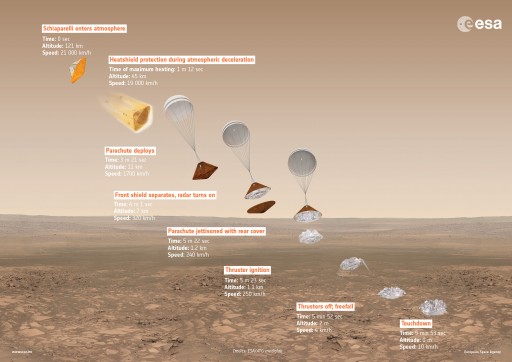
By that point, the lander’s EDL engineering sensors and atmospheric science payloads will be up an running to record data on the entry environment and the response of the spacecraft’s Norcoat Liege heat shield material by measuring temperatures, pressures and heat flux on different locations of the heat shield and backshell.
Schiaparelli encounters peak heating one minute and 12 seconds after Entry Interface at an altitude of 45 Kilometers, requiring the heat shield to endure temperatures of 1,750 °C. Three minutes and 21 seconds after hitting the atmosphere, Schiaparelli will have slowed to a speed of 472 meters per second, making it safe to deploy the Supersonic Parachute.
Schiaparelli employs a single-stage Disk Gap Band parachute with heritage from the Cassini Huygens lander. The 12-meter diameter parachute is deployed by a pyrotechnic mortar, ejecting the parachute bag with a speed of 30 meters per second and the folding technique of the chute & chords ensures a successful deployment.
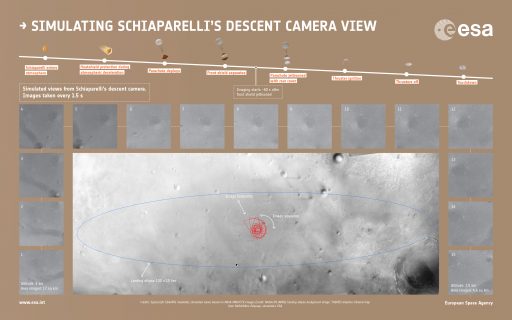
40 seconds after chute deploy, Schiaparelli drops the heat shield, allowing its landing radar to begin acquiring altitude and ground speed readings. Also, with the heat shield out of the way, the Descent Camera will get a clear view of the ground. It is programmed to begin taking images based on time-tagged commands expected to execute at three Kilometers in altitude.
The Descent Camera is commanded to collect 15 black-and-white images at 1.5 second intervals to help reconstruct the motion of the later and document the landing site with a wide field of view.
An an altitude of 1.2 Kilometers, traveling 89 meters per second, Schiaparelli will cut the connection to its Back Shield and free fall for only one second before igniting its nine landing engines to begin the critical powered descent.
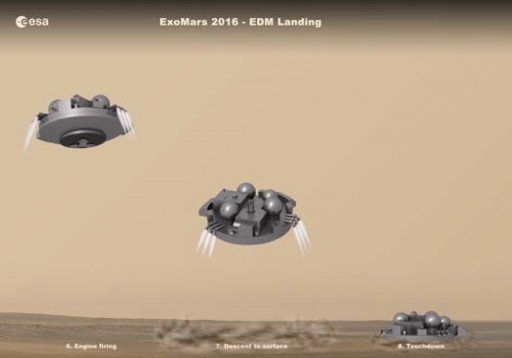
Three banks of three thrusters, each generating 440 Newtons of thrust, will be tasked with decelerating the surface platform from a speed of 270 Kilometers per hour to just 7km/h around two meters above the surface. The radar is the prime instrument used to trigger the separation of the lander and control its descent to the surface while attitude data is provided by the Inertial Measurement Unit.
The engines operate in pulse mode so that pulsing individual thrusters and/or banks can be used to control the orientation of the lander while on the final descent to the surface. Cutoff of the engines is commanded when Schiaparelli is two meters above the surface and the lander will free fall for a landing at a speed of 11km/h. A crushable structure at the bottom of the lander will absorb some of the shock at landing to ensure the surface science equipment survives touchdown.
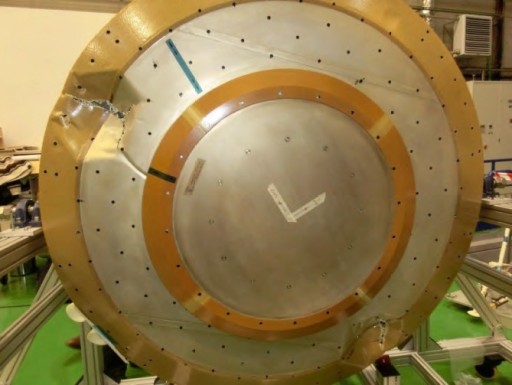
Landing, expected at 14:48:11 UTC, targets a relatively large 100 x 15-Kilometer ellipse in Meridiani Planum that offers a large flat terrain allowing for some uncertainty in the landing sequence because the exact properties of the atmosphere are not known ahead of entry and no effort will be made to put the vehicle through a guided re-entry instead of a ballistic one which was chosen as the simpler of the two options.
Throughout its re-entry and landing sequence, Schiaparelli will continuously send telemetry data via UHF antennas on the Back Shield and the Surface Platform. These signals will be recorded by the Trace Gas Orbiter that will store the data on board ahead of playback later in the day. Mars Express, ESA’s flagship Mars orbiter in operation since 2003, will also be in a position to capture the data and is programmed to send it to Earth around one hour after landing.
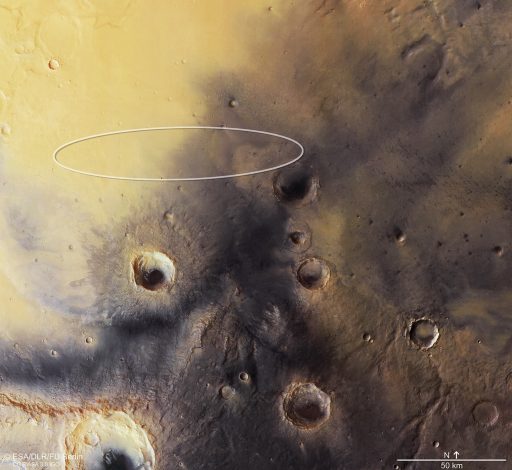
A ground-based recording campaign is being organized by NASA, ESA and India, utilizing the Giant Meterwave Radio Telescope located near Pune in India and comprised of 30 radio telescopes with 45-meter dishes – capable of receiving the extremely faint UHF signals after traversing 175 million Kilometers through the solar system.
The radio telescope array will be modified with radio science equipment from NASA’s Jet Propulsion Laboratory designed to record data from Schiaparelli and NASA’s InSight lander. Signals will be recorded and a real-time signal spectrum will confirm the aliveness status of the lander as it goes through the critical landing events.
On October 19, signals from Mars travel nine minutes and 46 seconds before reaching Earth. Therefore, if signals through the radio telescope array are still present after 14:58 UTC, it will be safe to assume Schiaparelli mastered its landing and is intact on the surface of Mars.
Due to the experimental nature of the ground-recording campaign, it is possible that a real-time confirmation of landing may not be possible in which case teams would have to wait for the data from Mars Express with confirmation of successful touchdown confirmed through that source at around 16:30 UTC.
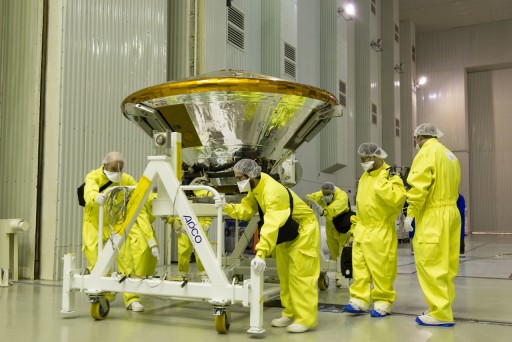
In case of an issue with Mars Express, the next possible confirmation of landing would come from NASA’s Mars Reconnaissance Orbiter that passes over the landing site within 90 minutes of touchdown to receive a data uplink from Schiaparelli containing a recorded data set from the landing maneuver. MRO will relay the data to Earth a short time later and NASA will pass it on to ESA, expected around 17 UTC.
The most detailed data set from the EDL Sequence will be provided by the Trace Gas Orbiter with downlink occurring in the overnight hours to October 20. Should any off-nominal situation arise during EDL, ESA will have to wait for the data from TGO to conclusively confirm the fate of Schiaparelli and the nature of any problems.
While Schiaparelli is looking forward to a fast-paced six-minute landing adventure, the Trace Gas Orbiter and its team are set for over two hours of nail-biting on October 19.
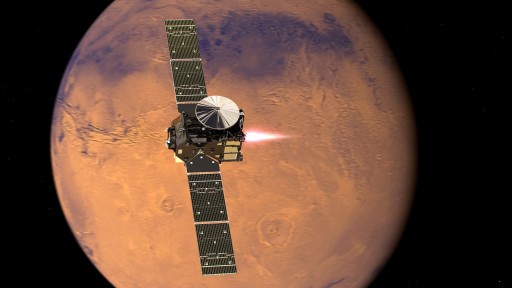
Centered around its close pass of Mars, the TGO spacecraft will fire its 424-Newton main engine for 139 minutes, beginning at 13:05 UTC in order to slow down and be captured in a highly elliptical orbit around Mars. TGO will use its navigation system to track the progress of its burn and shut down its engine after sensing it slowed down by 1,550 meters per second which should put the craft into a 298 by 95,856-Kilometer orbit.
TGO will send an X-Band carrier signal via its omni-directional Low Gain Antennas which will be monitored by ESA’s tracking stations and NASA’s 70-meter Deep Space Network antennas. Doppler tracking of the carrier will provide real-time insight into the change in speed provided by the burn and tracking for around one hour after the MOI burn will provide firm confirmation on whether TGO has achieved its intended orbit – becoming only the second European orbiter of Mars.
Next Steps
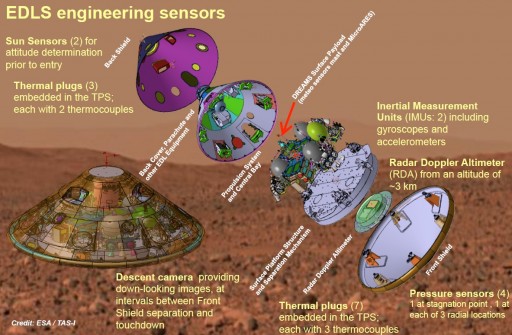
After its ambitious landing demonstration, Schiaparelli is expected to remain operational for four Martian days or Sols – the mission is constrained by power availability from the non-rechargeable batteries. The primary task of the EDM mission is delivering the extensive landing data set and Descent Camera photos to the Mars Orbiters passing overhead with their UHF receivers.
As a bonus objective, Schiaparelli is expected to measure environmental parameters on the surface of Mars using its DREAMS sensor package going by the full name “Dust Characterization, Risk Assessment, and Environment Analyzer on the Martian Surface.”
>>Schiaparelli Instrument Overview
The primary goal of the DREAMS sensor package is to address Mars exploration goals by characterizing the landing site environment during the peak of the dust storm season. Dust in the atmosphere will be measured by the instrument and dust-raising phenomena will be studied to help assess risk posed by Martian dust storms for future crewed missions.
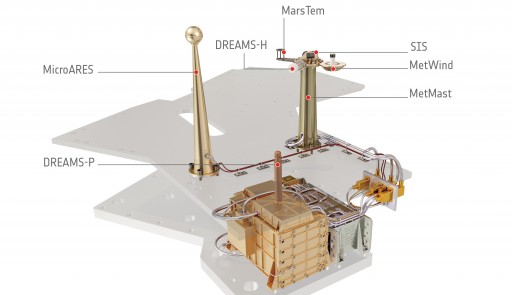
Data gathered by DREAMS includes unprecedented parameters such as electrostatic discharges, electrostatic charging, and electromagnetic noise created by dust moving through the atmosphere which can be potentially harmful for communications systems.
DREAMS will make the first ever measurements of the electric field on the surface of Mars which, combined with data on atmospheric dust and wind speed, will deliver insights into the role of electrical forces in dust-lifting and dust storm creation.
For the Trace Gas Orbiter, the next year will be spent with orbital maneuvers beginning with inclination adjustments in December before working on bringing down the very high apoapsis altitude – first through a retrograde burn of the spacecraft’s main engine followed by a six-to-nine-month aerobraking campaign. The Trace Gas Orbiter will initiate regular science activities in December 2017 operating its four instruments to study the Martian atmosphere.
